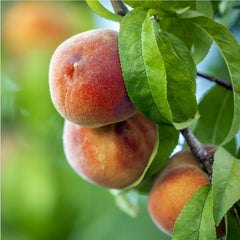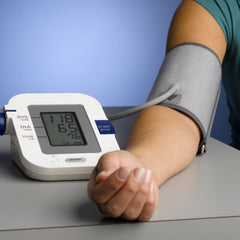Preventing Thrombosis Starts with Eating the Right 7 Types of Foods
Table of Contents:
- Eat These 7 Types of Foods to Reduce the Risk of Thrombosis
- Fresh Fruits and Vegetables
- Oils Rich in Oleic Acid
- Oils High in Alpha-Linolenic Acid
- Foods Rich in Beta-Glucan
- Foods Containing Soy Lecithin
- Foods Rich in Resveratrol
- Fish Rich in DHA
- In Addition to Diet, These 3 Habits Help Lower Thrombosis Risk
- FAQs about Thrombus
When it comes to thrombosis, most people are familiar with the term. Under normal circumstances, the formation of blood clots serves a protective function by stopping bleeding—an essential defense mechanism in humans and animals. However, when blood components such as platelets and coagulation factors abnormally clot within blood vessels or heart chambers, pathological thrombosis can occur. This disrupts blood circulation and, if a clot dislodges, may lead to life-threatening events.

Eat These 7 Types of Foods to Reduce the Risk of Thrombosis
Fresh Fruits and Vegetables
Fresh produce is rich in folate, vitamin C, and other antioxidants.
Folateimproves endothelial function and helps lower the risk of stroke.
Vitamin Creduces the oxidation of low-density lipoprotein (LDL) cholesterol, inhibits smooth muscle cell proliferation and platelet adhesion—factors that slow the progression of atherosclerosis, enhance circulation, and reduce stroke risk.
Antioxidantsexhibit anti-inflammatory effects by combating oxidative stress, thereby reducing thrombosis formation.
Darker-colored fruits and vegetables generally contain more antioxidants. Recommended options include purple cabbage, purple sweet potatoes, carrots, pumpkins, broccoli, spinach, and mustard greens. Aim for 300–500 grams of vegetables per day, with at least half being dark-colored varieties.
Oils Rich in Oleic Acid
Cooking oils like olive oil, camellia oil, avocado oil, high-oleic peanut oil, high-oleic sunflower oil, and low-erucic acid rapeseed oil are all rich in oleic acid (an omega-9 monounsaturated fatty acid).
Cardiovascular disease and thrombosis are closely linked, with arterial thrombosis frequently occurring in coronary vessels. Olive oil, a staple of the Mediterranean diet, is high in omega-9 fatty acids. Numerous studies suggest these monounsaturated fats can help lower total cholesterol, triglycerides, and LDL cholesterol levels.
Oils High in Alpha-Linolenic Acid
Flaxseed oil and perilla seed oil are excellent sources of alpha-linolenic acid (ALA), an omega-3 fatty acid. Replacing saturated fats with more unsaturated fats in the diet benefits vascular health.
Omega-3 fatty acids help lower diastolic blood pressure and reduce the risk of stroke. They also decrease waist circumference and triglyceride levels in overweight or obese individuals, contributing to lower thrombosis risk. Furthermore, studies show that omega-3s reduce levels of homocysteine—a known independent risk factor for cardiovascular disease.
Foods Rich in Beta-Glucan
Beta-glucan, a water-soluble dietary fiber with high water-binding and absorptive capacity, helps reduce blood viscosity and supports cardiovascular health. It is primarily found in oats, barley, and highland barley.
Evidence indicates that regular consumption of oats or barley helps lower cholesterol levels and reduces the risk of coronary heart disease.
Foods Containing Soy Lecithin
Soy lecithinhas strong emulsifying properties, influencing how fats and cholesterol are transported and deposited in the body. It helps eliminate excess triglycerides, softens blood vessels, reduces blood viscosity, lowers lipid levels, and promotes circulation—all of which help prevent coronary heart disease and cerebral thrombosis.
Soybeans naturally contain lecithin and are free from cholesterol. Additionally, soy and soy-based foods are rich in phytosterols, which can reduce LDL cholesterol levels and lower the incidence of coronary artery disease.
Common soy products like soy milk, tofu, and dried tofu sticks are easier to incorporate into daily diets than whole soybeans.
Foods Rich in Resveratrol
Research suggests that resveratrolmay inhibit platelet aggregation, regulate lipid metabolism, promote vasodilation, and protect the heart muscle under chronic ischemic conditions. It may also reduce infarct size and help prevent cardiovascular diseases.
Resveratrol is found in high concentrations in grapes, mulberries, pineapples, peanuts, bamboo shoots, and water bamboo.
However, it’s important to note that research on the link between specific foods and thrombosis is still in early stages, with limited sample sizes. Current findings are for reference only, and more studies are needed to confirm their effectiveness.
Fish Rich in DHA
DHA (docosahexaenoic acid), another omega-3 fatty acid, has been shown to reduce platelet aggregation and clot formation, thereby lowering the risk of thrombosis.
Fatty fish such as salmon, sea bass, yellow croaker, and freshwater eel are rich in DHA. It is recommended to consume 300–500 grams of fish per week, ideally spread over at least two meals.
In Addition to Diet, These 3 Habits Help Lower Thrombosis Risk
Avoid Smoking
Smoking harms not just the lungs but also the blood vessels. Studies show that smokers are:
- 1.75 times more likely to suffer from acute coronary syndrome
- 1.37 times more likely to experience ischemic stroke
- 1.21 times more likely to have hemorrhagic stroke compared to non-smokers
Around 19.9% of acute coronary syndrome and 11.0% of ischemic strokes are attributable to smoking. This is because smoking increases levels of fibrinogen and other coagulation factors, promoting platelet aggregation and clot formation.
Limit Alcohol Consumption
A study published in *The Lancet* revealed that consuming over 100 grams of alcohol per week significantly raises the risk of cardiovascular diseases, including coronary heart disease.
Alcohol increases the risk of cerebral thrombosis, potentially due to its role in inducing arrhythmias or abnormal heart wall movements that can cause embolic strokes. It also promotes platelet aggregation, activates the coagulation system, constricts cerebral vascular smooth muscle, and alters cerebral metabolism—reducing cerebral blood flow.
If you must drink, keep alcohol intake below 15 grams per day—roughly equivalent to 450 ml of beer, 150 ml of wine, or 30 ml of high-proof liquor.
Exercise Regularly
Prolonged sitting raises the risk of thrombosis, while regular physical activity enhances blood circulation, reduces blood viscosity, and decreases platelet aggregation.
Research indicates that:
- 150 minutes of moderate-intensity activity per week reduces the risk of coronary heart disease by 14%.
- 300 minutes per week can lower the risk by 20%.
FAQs about Thrombus
Are Blood Clots Curable?
Yes, blood clots are often curable, especially when diagnosed and treated promptly. With timely medical intervention—such as blood thinners, clot-busting medications, or procedures to remove the clot—many patients recover fully and avoid serious complications.
Are Blood Clots in Legs Dangerous?
Yes, blood clots in the legs can be dangerous, especially when they form in deep veins—a condition known as deep vein thrombosis (DVT). If a DVT breaks loose and travels to the lungs, it can cause a pulmonary embolism, a life-threatening condition that blocks blood flow to the lungs.
Are Blood Clots in the Lungs Dangerous?
Yes, blood clots in the lungs, also known as pulmonary embolisms, are very dangerous. They can block blood flow to the lungs, causing serious complications such as low oxygen levels, lung damage, or even heart failure. If not treated promptly, a pulmonary embolism can be life-threatening, making immediate medical attention critical.
Are Blood Clots in the Neck Dangerous?
Yes, blood clots in the neck can be very dangerous and even life-threatening. They can block blood flow to the brain or heart, leading to serious complications such as stroke, heart attack, or even death.
Can A Blood Clot Cause A Bruise?
Yes, a blood clot can cause a bruise. When a clot forms, it can block normal blood flow in a vein. This blockage can lead to a buildup of blood in the affected area, causing discoloration and swelling that appear as a bruise.
Related Recommendations:
- Warning Signs of Blood Clots During Sleep: Don't Ignore These Symptoms
- How to Prevent and Reduce Plaque in Blood Vessels
- High Blood Lipids Warning: How to Identify Health Risks through Leg Symptoms
- These Small Things Can Affect Your Blood Sugar – Pay Attention!
- 4 Things People with High Blood Pressure Should Avoid in the Morning
- Can Calcium Supplements Lead to Vascular Calcification? How to Supplement Calcium Correctly





